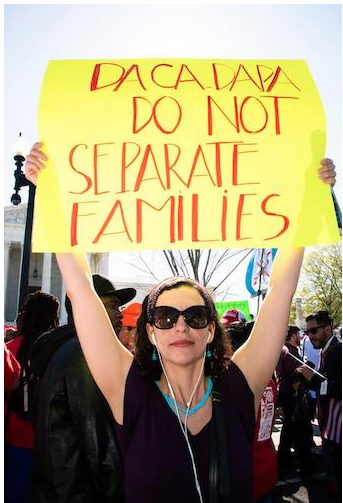Future Is Complicated for DREAMers
By • June 19, 2017 0 333

On Friday, June 16, the Department of Homeland Security announced decisions on two executive orders instituted by President Obama in 2012 and 2014 to protect certain groups of illegal immigrants from deportation. The first, DACA (Deferred Action for Childhood Arrivals), is to be continued “for now.” The second, DAPA (Deferred Action for Parents of Americans), is to end immediately.
Among all the acrimony, there are two points on which almost everyone involved in the volatile immigration debate can agree: (1) there are currently about 11 million foreign nationals who are living and working in the United States without permits (in other words, illegally), some of them for well over a decade; and (2) among the most sympathetic of these immigrants are the estimated 1.2 million millennials (ages 18 to 32 or so) who were brought into the country before the age of 16, have lived in the country for at least five years, graduated from high school or got a GED and have not committed a violent felony. For about 10 years, these unauthorized immigrants, growing in number, have been known as DREAMers.
They were first euphemistically named DREAMers by Sen. Orin Hatch (R-Utah), making use of an acronym for Development, Relief and Education for Alien Minors. Hatch and his good friend Sen. Ted Kennedy (D-Massachusetts) were moved by the plight of high school graduates who “dreamed” of going to college but could not be admitted because of their unauthorized immigration status. The original DREAM Act to legalize this particular segment was part of the failed 2007 comprehensive reform bill pushed by Kennedy and President George W. Bush. It failed again as a stand-alone bill in December of 2010.
Since then, DREAMers have been highly visible at immigration reform hearings in Congress and at demonstrations. Over the years, many states have granted DREAMers who had graduated from state high schools the right to attend their state colleges on subsidized in-state tuition, even granting some the right to apply for state (but not federal) scholarships.
But DREAMers still did not have any legal immigration status. They were not allowed to work legally even with their degrees. DREAMers were openly angry that President Obama had not given them legal status in his first term of office. In May of 2011 at the Omni Sheraton Hotel in D.C., over the angry chants of DREAMers, Obama told a meeting of some 10,000 National Council of La Raza conference attendees (including this reporter) that he did not have the authority to grant legalization to DREAMers — only Congress did.
But in June of 2012, facing a tightening presidential election, the president suddenly announced he was issuing an executive order to the Department of Homeland Security to grant prosecutorial discretion from deportation to DREAMers who applied individually (it could not be a class action) and who qualified. Those granted the two-year deportation waiver would also be given a temporary work permit and the right to request a two-year extension.
DACA applicants had to supply birth certificates and documents proving how long they had been in the country, especially their entry before the age of 16. Most were from Mexico. Many had entered before they were teenagers. But there was no requirement to have been brought in by their parents or to speak English at any level. Over 700,000 successfully applied; by 2014 some were on their second extension.
DACA enabled many of them to finish college, get a job, even buy homes and start businesses. But only until they were 32 years old and without providing assistance to their parents (who knowingly had come into the country illegally) nor their siblings who did not qualify. And DACA did not protect them from deportation if they committed a serious felony. Under Obama, immigration reform that was intended to do all that was going nowhere. Activists for illegal immigrants demanded more.
Weeks after the November 2014 midterm elections, when the Senate majority unexpectedly changed to the Republicans, President Obama issued another executive order, this one for parents in the country illegally who had American-born or naturalized children. Again, those who qualified were to be given not only a waiver from deportation but also a work permit and the right to a driver’s license. This time, Texas objected. Driver’s licenses are a state matter, not a federal or presidential one. And certain procedures had not been followed. A judicial order to stop the action went to the Supreme Court, where it met with a tied decision that deferred to the state injunction. President Trump ended the entire program on June 16.
Republicans have been sympathetic to DREAMers. A hearing for a “Kids Act” was held in July of 2013 to legalize DREAMers in a stand-alone bill. Democrats opposed it because it wasn’t part of a comprehensive package. Similarly, in 2015 and 2016, Republican bills to legalize the parents of American veterans also failed to pass because it was not part of a comprehensive package. Immigration experts now believe these likely groups for legalization could very well be part of an eventual immigration deal made during the Trump era by Republicans and Democrats eager, if not desperate, to pass some form of immigration reform.

